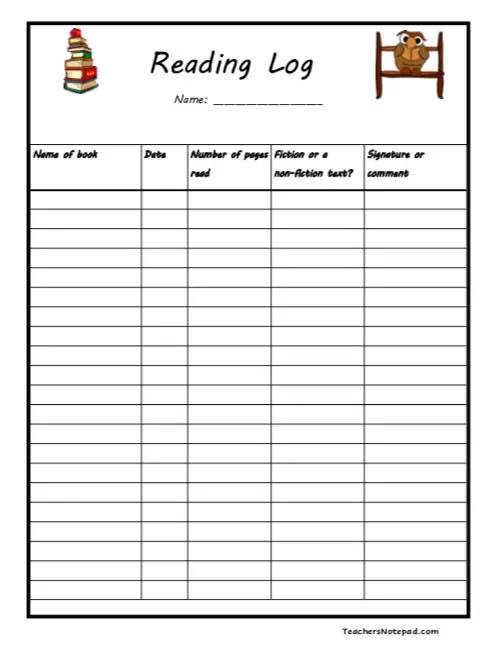Enjoying reading a good book, and losing yourself in a richly woven story is a wonderful addition to anyones life.
I have my own memories of being a child entranced by a fantastic tale, and credit my love of the written word to being surrounded by books since before I could even read.
It should come as no surprise then to discover that I try to encourage the enjoyment of reading in all children.
Today I’ve got a couple of reading log templates to share with you, which your children can use to keep track of what they’ve read.
How to use
Use it at home for nightly reading.
These could be books sent home by the teacher, or books children have chosen from the library.
Why not try a reading challenge with your children?
This could be over the the summer, or during a term.
Set your class a challenge – how many pages (or books!) can you read?
Maybe you’re wanting to expand their horizons at the same time, so try letting them know you’ll be rewarding those who read both fiction and non-fiction books.
Set up a reading station in the classroom, complete with a range of books. Include texts of different levels, covering a range of different topics, and both fiction and non-fiction.
Have follow up activities, e.g. comprehension quiz or worksheet, or crafts relating to the book.
Encourage the children to complete a short book recommendation form to highlight to the other students why they’d like to read a book they’ve just enjoyed.
What age groups can use this?
A reading log is effective from even the earliest of schooling.
1st and 2nd graders parents can help their child fill it in, while grade 3 and above can complete their reading log independently, and be more interested in engaging (and maybe even getting some recognition or reward!)
The teacher might check it once a week or so to see what the children are reading, how they are going, and be able to spot any challenges they’re having.


